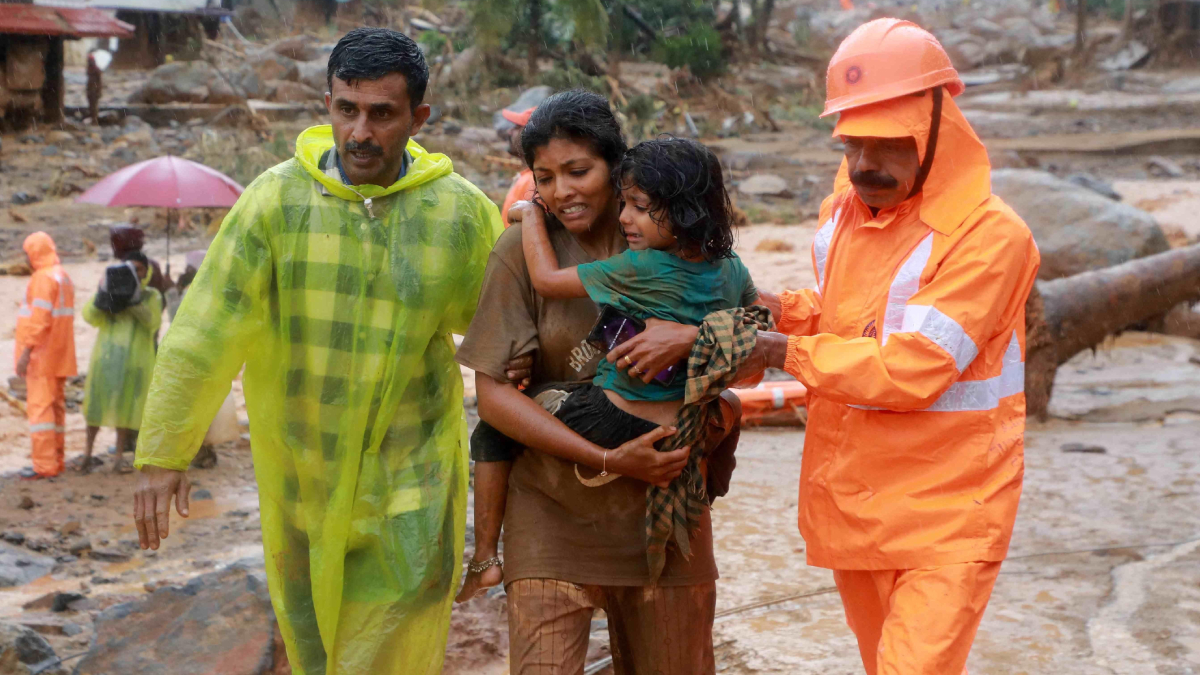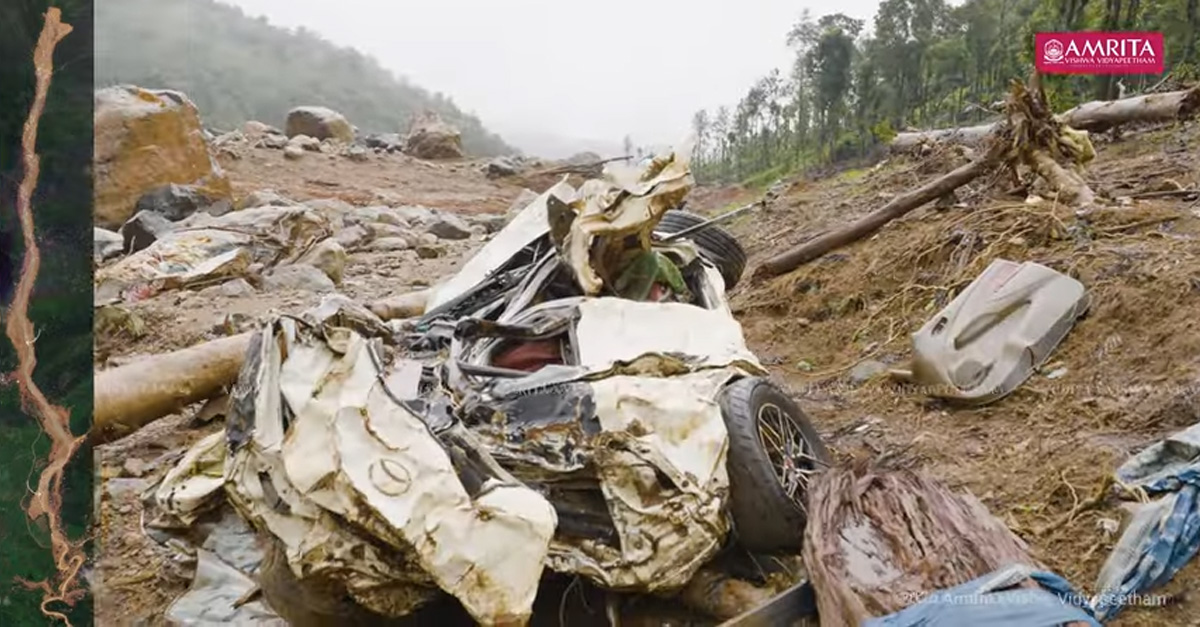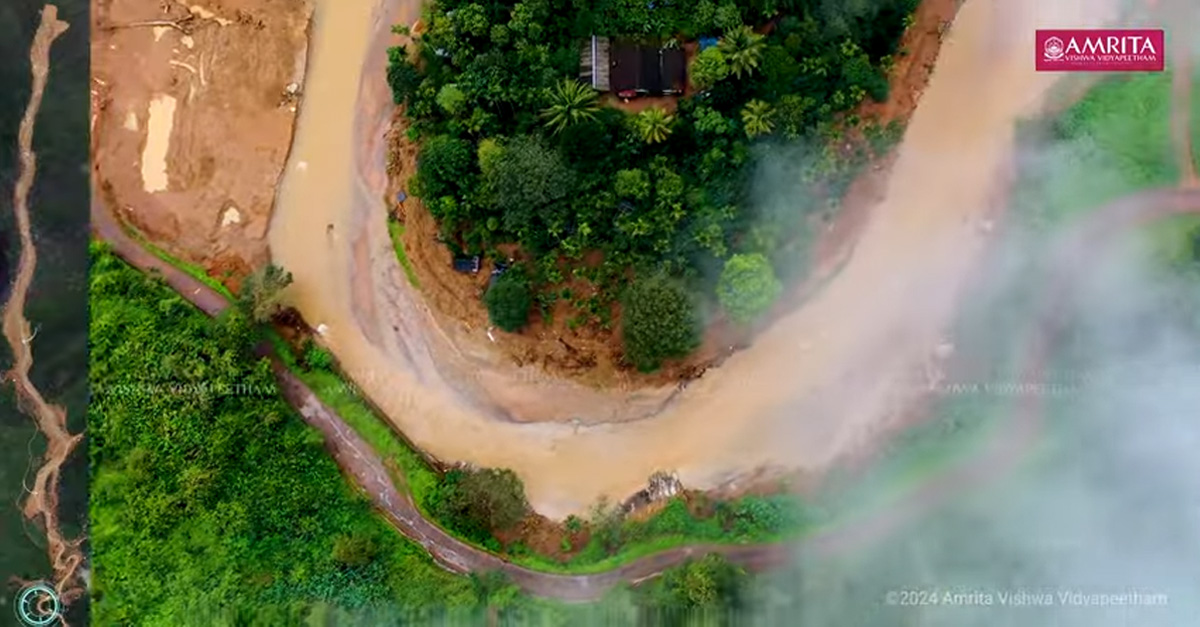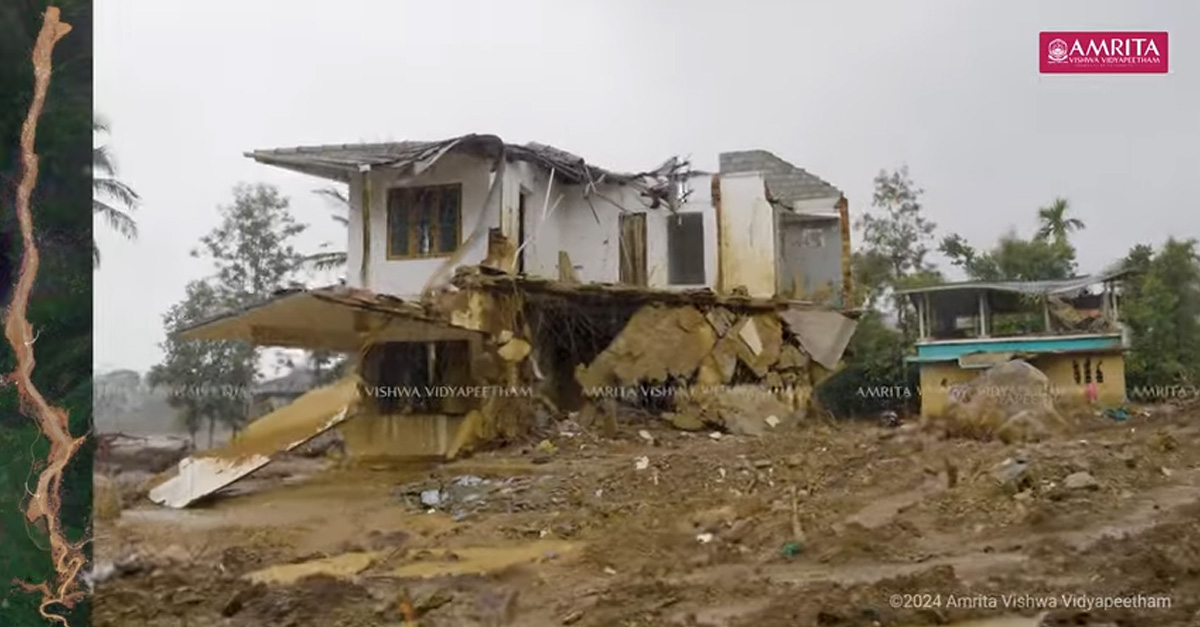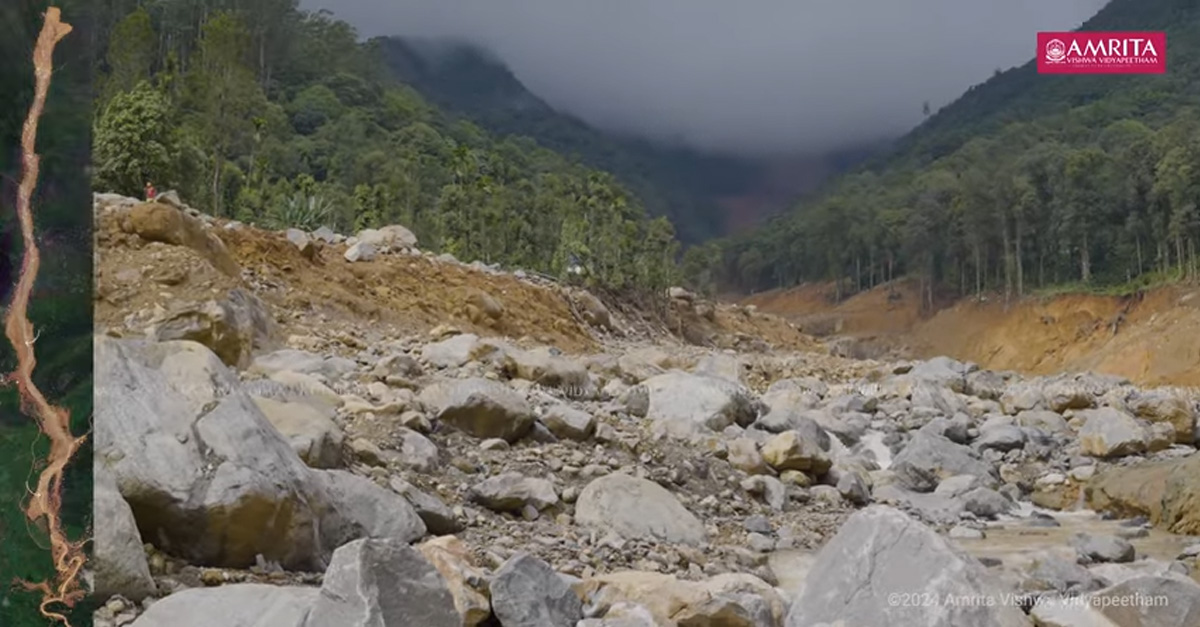Key Points
- Amma has sent a team of scientists with Amrita University to assess areas devastated by deadly landslides in Kerala’s Wayanad district. She has committed to fund the deployment of the Amrita Landslide Early Warning System there.
- The researchers trekked along a path from the landslides’ toe to its crown region and were able to evaluate a rapid avalanche over a distance of about 6 km with a huge altitude difference of more than 550 m.
- In the high hill range of the Western Ghats, it is an area where the fragile ecosystem has become unstable. This is partly due to human factors including commercial forestry, coffee and tea plantations, mining-quarrying, unregulated construction, and tourism.
As Chancellor of Amrita University, Amma has sent an eight-member team of scientists to assess areas affected by this year’s massive landslides in Kerala’s Wayanad district. She has committed to fund the deployment of the Amrita Landslide Early Warning System (A-LEWS) there.
The catastrophic disaster occurred at the early hours of July 30, 2024, taking lives and destroying homes in the villages of Punjirimattom, Mundakkai, and Chooralmala. More than 200 buildings, mostly houses and home-stays, were swept away.
This resulted in the deaths of 443 people with approximately 200 people still missing. Property damage is estimated at ₹1,200 crore ($144 million) and around 10,000 residents were displaced from their homes. It is one of the most devastating natural disasters in Wayanad’s history. Shattered communities now face the immense challenge of rebuilding their lives.
On August 23, 2024, Dr. Maneesha V Ramesh, Provost, Amrita Vishwa Vidyapeetham, and experts with the Amrita Center for Wireless Networks & Applications (AWNA) and Amrita School for Sustainable Futures of Amrita Vishwa Vidyapeetham travelled to the site to observe first-hand the aftermath.
The researchers trekked along a path from the landslides’ toe to its crown region. The area is covered with the Vellarimala Forest in the high hill range of the Western Ghats. Their detailed preliminary investigation is an evaluation for the causes and triggers that resulted in such a calamity.
The landslides were triggered by incessant and unprecedented monsoon rains. Over 200 mm of rain fell within 24 hours, followed by an additional 370 mm in the following day. The result was multi-hazard events that began at approximately 2 am on the 30th of July, including landslides, flash floods, and aggressive river erosion.
The epicenter was higher up in the mountains above Punchirimattom village on the banks of the Punapuzha River, draining downstream into the River Iruvazhinji Puzha. The villages of Mundakkai and Chooralmala were then struck as this cascading chain of destruction continued. Approximately 247 acres of land had shifted during the landslides, illustrating the scale of the disaster.
As they reached the crown of the landslides, the Amrita team could only make observations from a distance using a drone camera. The areas were still vulnerable with prevailing weather conditions not favourable, making it risky for field surveys at the time.
What they were able to evaluate was a rapid-motion debris avalanche with a runout distance of about 6 km. The crown began at an elevation of 1587 m above sea level and continued to its toe at about 819 m above sea level. It constituted a well-defined boundary at the rear scar with a huge altitude difference of more than 550 m.
They also found clear evidence of the connection between the first landslide that struck the villages of Punchirimattom and Muddakai at around 2 am and the second landslide-induced flash flood that hit Chooralmala at 4:10 am. The rock-cum-debris flow moved very rapidly over the downslope in a short time.
As well, the Amrita team made overall observations of the impact of human activities in the region. Commercial forestry, coffee and tea plantations, mining-quarrying, and unregulated construction have long been taking their toll on Vellarimala’s fragile ecosystem. The slopes of the high hills have become hazardous and unstable. Further contributing to these detrimental effects, settlements have been on the rise, including recreational resorts, home-stays, and adventure tourism.
With climate change and its increasing extreme weather events, it is the need of the hour to carry out large-scale tracking of all factors in order to save lives and rehabilitate communities after disasters strike. This includes landslide hazard mapping, ground motion monitoring, detailed rainfall threshold analyses, flood modelling, and hazard impact zonation and assessment.
Read more about our efforts after this year’s landslides in Wayanad.

